This article was medically reviewed by Troy A. Miles, MD. Dr. Miles is an Orthopedic Surgeon specializing in Adult Joint Reconstruction in California. He received his MD from the Albert Einstein College of Medicine in 2010, followed by a residency at the Oregon Health & Science University and fellowship at the University of California, Davis. He is a Diplomat of the American Board of Orthopaedic Surgery and is a member of the American Association of Hip and Knee Surgeons, American Orthopaedic Association, American Association of Orthopaedic Surgery, and the North Pacific Orthopaedic Society.
There are 11 references cited in this article, which can be found at the bottom of the page.
wikiHow marks an article as reader-approved once it receives enough positive feedback. This article has 34 testimonials from our readers, earning it our reader-approved status.
This article has been viewed 2,532,980 times.
Numbness in your feet and toes can be caused by many different conditions and is often accompanied by a tingling feeling. Numbness can be as uncomplicated as your foot going to sleep or as serious as diabetes or multiple sclerosis. It is necessary to address numbness in your feet and toes because it can not only affect your ability to walk, but it can also be a symptom of a much more serious condition.
Things You Should Know
- Deal with occasional numbness by exercising, changing positions, removing excessively tight clothing, and massaging your feet.
- Get a diagnosis from your doctor if you suffer from chronic numbness and suspect diabetes. Manage your diabetes and try losing weight to ease the numbness.
- For chronic numbness caused by other ailments, seek proper treatment from your doctor and discuss medication with them. Take vitamins and avoid alcohol as well.
Steps
Dealing With Occasional Numbness
-
1Get moving. Often numbness in the feet or toes occurs when you have been sitting or standing in one place for a long time. The best way to get rid of this kind of numbness is to stimulate circulation in the foot by moving around. Try going for a short walk, or even just moving your foot around while you sit.
- In addition to helping you get rid of occasional numbness, regular exercise can also help prevent numbness in the first place. Try to incorporate some physical activity into your daily schedule, even if it's just a short walk.
- High impact exercises like jogging can cause numbness in the feet and toes for some people, so try lower impact exercises like swimming or biking.
- Stretch well before workouts, wear appropriate exercise shoes, and exercise on level surfaces.
-
2Change positions. Numbness is often triggered by seating positions that pinch the nerves in your legs and/or feet. Avoid sitting on your feet or crossing your legs for long periods of time.[1]
- If you have to sit for long periods of time, you might want to try elevating your feet periodically to increase blood flow.
Advertisement -
3Remove excessively tight clothing. Overly tight pants, socks, or other garments worn on the lower part of your body might prevent blood from flowing to your feet, which can cause numbness. Remove or loosen these items to allow for better blood flow.
-
4Massage the foot. Gently massaging the numb area of your foot can help increase circulation and make occasional numbness go away faster.
-
5Warm your feet with a heated blanket or heating pad. Exposure to the cold can cause numbness and tingling. Warm your feet to get rid of numbness.
-
6Wear the right shoes. High heels or shoes that pinch the toes can cause numbness. You may also experience numbness if you wear shoes that are too small for you, especially while exercising. Choose comfortable shoes that fit you well. Insoles may help make some of your shoes more comfortable.
-
7Know when to see your doctor. Occasional numbness in the feet or toes is usually no big deal, especially when there is an obvious cause, such as an uncomfortable seating position or tight clothing. If, however, you experience numbness frequently, or if it lasts for more than just a few minutes, you should see a doctor to make sure there are no underlying causes.[2]
- Seek emergency treatment if your foot numbness accompanies symptoms such as weakness, paralysis, loss of bladder or bowel control, or slurring of speech.
- Pregnancy often causes swelling of the feet and toes, which can cause numbness. If your doctor tells you that your numbness is due to pregnancy and not to any other condition, follow the recommendations for relief of occasional numbness.[3]
Dealing With Numbness Related to Diabetes
-
1Get a diagnosis. Diabetes is the most common cause of chronic numbness in the feet and toes. It causes numbness by both damaging the nerves and by causing poor circulation to your feet. Numbness is often one of the first symptoms of diabetes, so you should talk to your doctor and get tested right away if you have regular numbness that does not have another obvious cause.
- Numbness can be extremely serious for people with diabetes because it may cause them not to feel pain in the feet caused by things like heat, punctures, or blisters.
- Decreased circulation also means that the person's feet will heal much slower, so infection is a serious concern. For this reason it is very important that you take especially good care of your feet if you have diabetes.
-
2Manage your diabetes. Keeping your blood glucose levels in check is the best way to prevent circulation issues and neuropathy, both of which can cause numbness, if you have diabetes. Develop a plan with your doctor that works for you.[4]
- Check your blood sugar regularly with a blood glucose meter and get your A1C levels tested a few times each year.
- Although numbness in your feet and other symptoms of diabetes may make it difficult to exercise, do you best to stay active. Aim for 30 minutes of exercise each day, whether it is going to the gym or walking up and down the stairs at home.
- Eat a healthy, balanced diet including fruits, vegetables, whole grains, beans, fish, and low-fat dairy. Do your best to avoid foods that trigger blood sugar spikes, such as cookies and soda.
- Take all of your prescribed medications, including insulin, regularly.
- Smoking can worsen the symptoms of your diabetes, so ask your doctor for help quitting.
-
3Lose weight. Extra pounds and obesity can contribute to numbness in your feet and toes, so ask your doctor for tips on healthy weight loss to help alleviate some of your symptoms.
- Losing weight may also help you lower your blood pressure, which may also help reduce numbness. If losing weight is not enough to get your blood pressure under control, consider talking to your doctor about medications.[5]
-
4Use products designed for diabetic foot care. Compression hose and socks help stimulate circulation, which can decrease numbness.Special lotions that contain capsaicin may also provide you with relief from numbness.[6]
-
5Follow the tips for occasional numbness relief. If you have diabetes, you may still benefit from some of the methods recommended for the relief of occasional numbness, such as moving your feet, elevating your feet, massaging your feet, and using warm compresses. While these techniques might offer you temporary relief from your symptoms, keep in mind that they will not cure the underlying disease, so you still need to be vigilant about managing your diabetes and taking care of your feet.
-
6Ask your doctor about alternative treatments. Some studies have shown benefits to relaxation and biofeedback treatment, as well as anodyne therapy, in the treatment of foot numbness related to diabetes. These treatments may not be covered by your insurance, but they may be worth investigating if nothing else works to relieve your numbness.[7]
- Your doctor may also prescribe medication to address your numbness, although it is likely to be an off-label use of the drug.[8]
Dealing With Chronic Numbness Caused By Other Conditions
-
1Get treatment for injuries. Injuries to the feet, toes, ankles, head, or spine can cause numbness to occur. An orthopedist, neurologist, or chiropractor may be able to treat your injury to relieve numbness.[9]
-
2Discuss all medications with your doctor. Chemotherapy drugs often cause numbness in the extremities, as do many other prescription drugs for a wide variety of conditions. If you begin experiencing numbness after you begin a new medication, discuss it with your doctor to determine if the benefits of the medication outweigh the side effects. There may be another medication available to treat your condition that will not have the same side effects.[10]
- Never stop taking your medications without first discussing it with your doctor. For some medications, you will need to reduce your dosage slowly.
-
3Take vitamin supplements. A lack of vitamin B12 or other vitamins may be causing your numbness. Get a blood test to check for vitamin deficiencies, and begin taking the recommended supplements if you have any deficiencies.[11]
-
4Take medication for chronic conditions. Persistent numbness in your feet and toes may be a symptom of any number of underlying conditions, including multiple sclerosis, arthritis, Lyme disease, and many more. Taking medications to treat the underlying condition may help reduce the numbness in your feet.[12]
- If you have not been diagnosed with any chronic conditions, numbness in your feet and toes might be the first sign. Be sure to discuss all of your symptoms with your doctor so she will know what tests to run.
- If you already have a diagnosis, but the numbness is a new symptom, be sure to bring it up at your next doctor's appointment to find out if there are additional medications you should take or other treatments you should pursue.
-
5Reduce your alcohol consumption. Heavy alcohol consumption can cause a numbing sensations in the limbs, including feet and toes. Reducing your regular intake of alcohol can help to prevent numbness.[13]
-
6Treat the symptom. If you are already taking all the necessary steps to treat the underlying cause of the numbness in your feet, but the numbness does not subside, try following the steps to relieve occasional numbness. While these methods will not cure your condition, doing things like elevating your feet, applying warm compresses, massaging the feet, and moving around may help alleviate the symptoms temporarily.
References
- ↑ http://www.health.com/health/gallery/0,,20568217_10,00.html
- ↑ http://www.healthgrades.com/symptoms/toe-numbness
- ↑ http://familydoctor.org/familydoctor/en/pregnancy-newborns/your-body/changes-in-your-body-during-pregnancy-third-trimester.html
- ↑ https://www.uofmhealth.org/health-library/footp
- ↑ http://www.diabetesselfmanagement.com/blog/healing-numb-feet/
- ↑ https://www.ncbi.nlm.nih.gov/books/NBK442009/
- ↑ http://www.diabetesselfmanagement.com/blog/healing-numb-feet/
- ↑ https://www.nhs.uk/conditions/peripheral-neuropathy/complications/
- ↑ http://www.spine-health.com/conditions/leg-pain/leg-pain-and-numbness-what-might-these-symptoms-mean
About This Article
To cure numbness in your feet and toes, talk to your doctor about taking vitamin supplements since vitamin deficiencies are often the cause of numbness. To temporarily alleviate numbness, try massaging your feet to increase circulation. You can also apply a warm compress or heating pad to your feet and toes to help restore feeling in them. Even just going for a walk or stretching can help relieve numbness by getting your blood flowing. To learn how to cure numbness that's related to diabetes, scroll down.





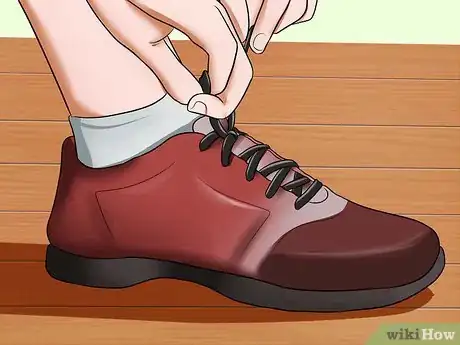
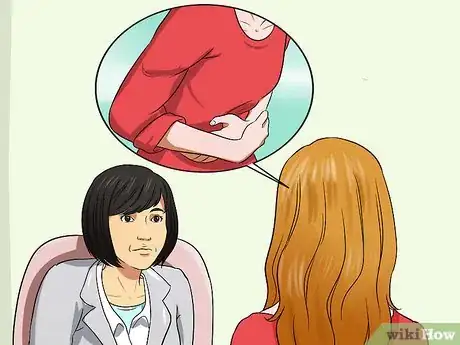



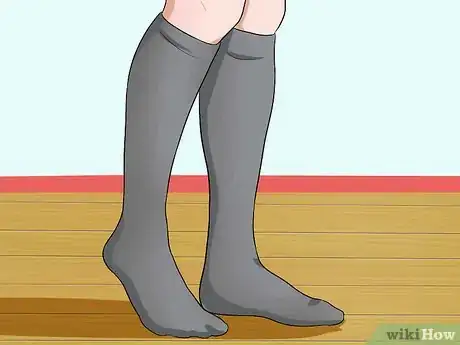

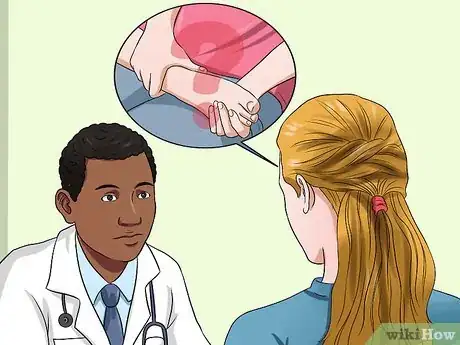
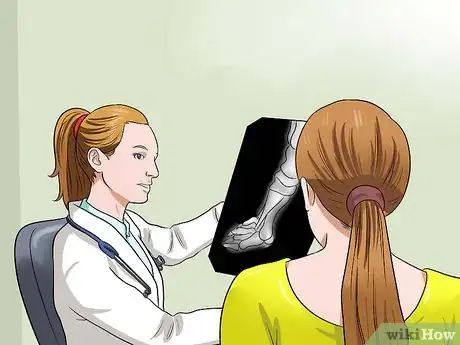


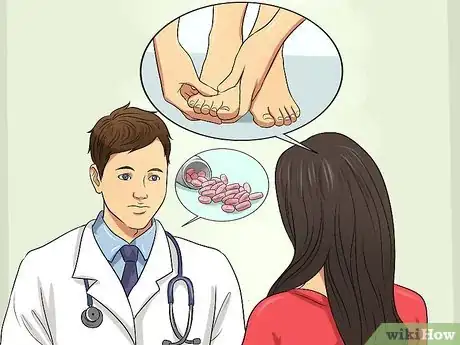



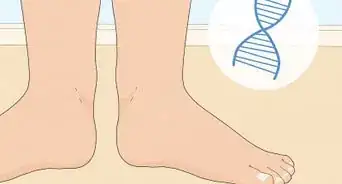

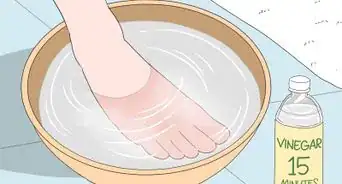

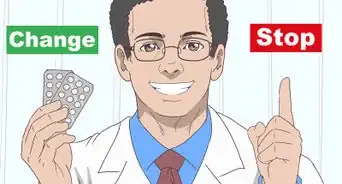





















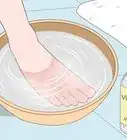



































Medical Disclaimer
The content of this article is not intended to be a substitute for professional medical advice, examination, diagnosis, or treatment. You should always contact your doctor or other qualified healthcare professional before starting, changing, or stopping any kind of health treatment.
Read More...